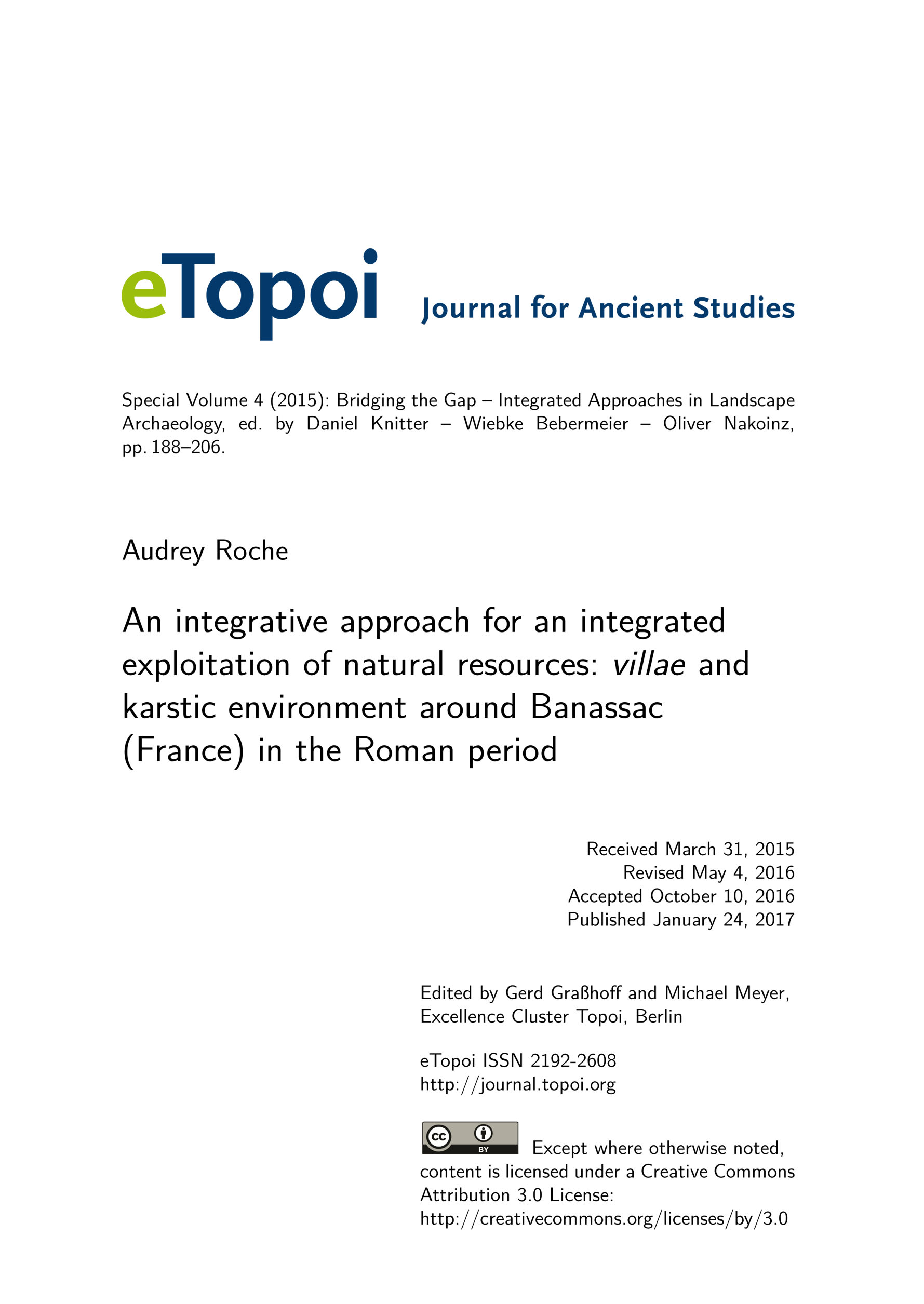An integrative approach for an integrated exploitation of natural resources: 'villae' and karstic environment around Banassac (France) in the Roman period
In order to shed light on the status and economic model of Banassac’s Early Empire terra sigillata workshop, systematic surveys were carried out on the karstic terrain of the area surrounding the town. Due to a shortage of sources, the project was carried out as an integrative ‘community archaeology’ project, from the definition of the scope of research to the drawing of conclusions and consideration of results. With the synthesis of settlement dynamics from the Mesolithic times to the Middle Ages provided by the study and precise data about occupied sites in Roman times (38 villae and 55 workshops), it is now possible to see at Banassac a villa controlling a fundus through an integrated economic system linking clay, pitch and iron.

